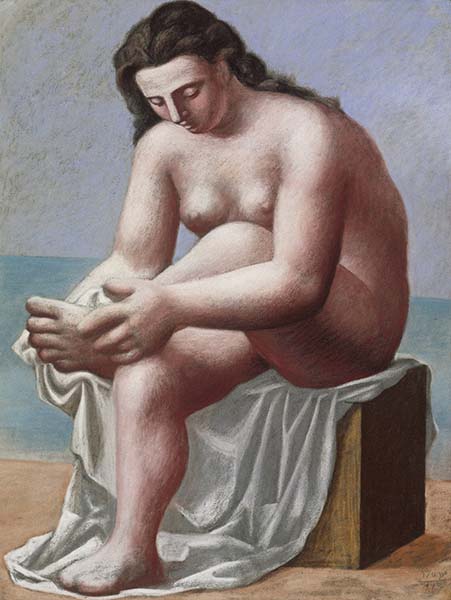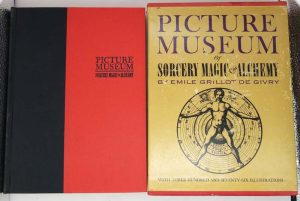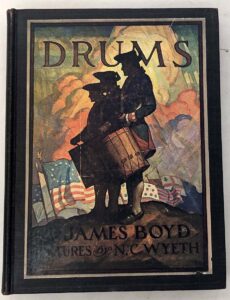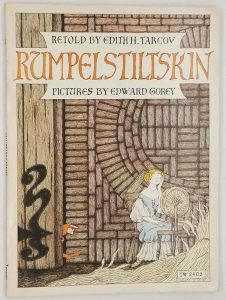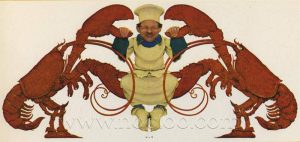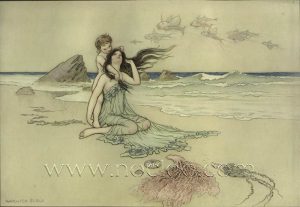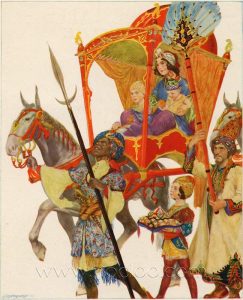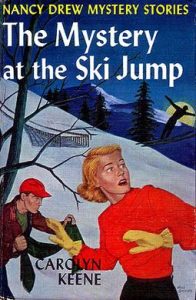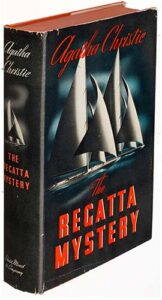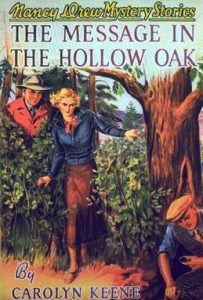Pablo Picasso [1919] - Baigneuse [art, paintings]
Pablo Picasso [1919] - Balcon avec vue sur mer [art, paintings]
Pablo Picasso [1919] - Bouteille de porto et verre [art, paintings]
Pablo Picasso [1919] - Composition [art, paintings]
Pablo Picasso [1919] - Compotier [art, paintings]
Pablo Picasso [1919] - Couple (Boucher) [art, paintings]
Pablo Picasso [1919] - Danseuses, d'apres une photographie [art, paintings]
Pablo Picasso [1919] - Femme a la cruche [art, paintings]
Pablo Picasso [1919] - Femme assise dans un fauteuil [art, paintings]
Pablo Picasso [1919] - Femme au chapeau a plume assise dans un fauteuil [art, paintings]
Pablo Picasso [1919] - Femme au chapeau a plume [art, paintings]
Pablo Picasso [1919] - Femme au chapeau a plumes [art, paintings]
Pablo Picasso [1919] - Femme debout accoudee (Olga) [art, paintings]
Pablo Picasso [1919] - Femme debout [art, paintings]
Pablo Picasso [1919] - Femme tenant un vase [art, paintings]
Pablo Picasso [1919] - Fillette au cerceau [art, paintings]
Pablo Picasso [1919] - Guitare et compotier sur un gueridon devant une fenetre ouverte [Nature morte devant une fenetre] [art, paintings]
Pablo Picasso [1919] - Guitare sur une table [art, paintings]
Pablo Picasso [1919] - guitare, Bouteille, coupe avec fruits et verre sur la table [art, paintings]
Pablo Picasso [1919] - L'italienne a la cruche (Italienne da pres une photographie) [art, paintings]
Pablo Picasso [1919] - L'italienne [art, paintings]
Pablo Picasso [1919] - La bouteille de Malaga [art, paintings]
Pablo Picasso [1919] - La famille de Napoleon III, d'apres une illustration [art, paintings]
Pablo Picasso [1919] - La sieste (Les moissonneurs) [art, paintings]
Pablo Picasso [1919] - La Sieste I [art, paintings]
Pablo Picasso [1919] - La sieste [art, paintings]
Pablo Picasso [1919] - La table devant la fenetre [art, paintings]
Pablo Picasso [1919] - Le gueridon [art, paintings]
Pablo Picasso [1919] - Le rideau de scene (Le Tricorne) [art, paintings]
Pablo Picasso [1919] - Les amoureux1 [art, paintings]
Pablo Picasso [1919] - Les communiants [art, paintings]
Pablo Picasso [1919] - Les premiers communiants [art, paintings]
Pablo Picasso [1919] - Maternite [art, paintings]
Pablo Picasso [1919] - Nature morte au pichet et pommes [art, paintings]
Pablo Picasso [1919] - Nature morte au pigeon [art, paintings]
Pablo Picasso [1919] - Nature morte avec pipe [art, paintings]
Pablo Picasso [1919] - Nature morte devant une fenetre [art, paintings]
Pablo Picasso [1919] - Nature morte devant une fenetre1 [art, paintings]
Pablo Picasso [1919] - Nature morte devant une fenetre2 [art, paintings]
Pablo Picasso [1919] - Nature morte devant une fenetre3 [art, paintings]
Pablo Picasso [1919] - Nature morte devant une fenetre4 [art, paintings]
Pablo Picasso [1919] - Nature morte et guitare [art, paintings]
Pablo Picasso [1919] - Nature morte sur la commode [art, paintings]
Pablo Picasso [1919] - Nature morte sur un gueridon (La table) [art, paintings]
Pablo Picasso [1919] - Nature morte sur un gueridon devant une fenetre ouverte [art, paintings]
Pablo Picasso [1919] - Nature morte sur un gueridon devant une fenetre ouverte1 [art, paintings]
Pablo Picasso [1919] - Nature morte sur une table devant une fenetre ouverte [art, paintings]
Pablo Picasso [1919] - Nature morte1 [art, paintings]
Pablo Picasso [1919] - Nature morte2 [art, paintings]
Pablo Picasso [1919] - Nature morte3 [art, paintings]
Pablo Picasso [1919] - Paysage a l'arbre mort et vif [art, paintings]
Pablo Picasso [1919] - Paysans endormis [art, paintings]
Pablo Picasso [1919] - Pigeons et compotier sur une table [art, paintings]
Pablo Picasso [1919] - Polichinelle a la guitare avant le lever de rideau [art, paintings]
Pablo Picasso [1919] - Portrait d'Olga [art, paintings]
Pablo Picasso [1919] - Portrait d'Olga1 [art, paintings]
Pablo Picasso [1919] - Portrait de Leonide Massine [art, paintings]
Pablo Picasso [1919] - Projet de costume pour le toreador (Le Tricorne) [art, paintings]
Pablo Picasso [1919] - Projet pour le decor (Le Tricorne) [art, paintings]
Pablo Picasso [1919] - Projet pour le decor (Le Tricorne)1 [art, paintings]
Pablo Picasso [1919] - Sept danseuses dont Olga Picasso au premier plan [art, paintings]
Pablo Picasso [1919] - Sept danseuses [art, paintings]
Pablo Picasso [1919] - Serenade [art, paintings]
Pablo Picasso [1919] - Tete de communiante [art, paintings]
Pablo Picasso [1919] - Trois danseuses [art, paintings]
Pablo Picasso [1919] - Vase, pipe, paquet de tabac [art, paintings]
Pablo Picasso [1919] - Verre, bouquet, guitare, bouteille [art, paintings]
Pablo Picasso [1919] - Vue sur le clocher de l'eglise Saint-Augustin [art, paintings]
Pablo Picasso [1919] - Vue sur le clocher de l'eglise Saint-Augustin1 [art, paintings]
Pablo Picasso [1920] - [Pierrot et Arlequin] Arlequin et Pulcinella III [art, paintings]
Pablo Picasso [1920] - Acrobatie erotique [art, paintings]
Pablo Picasso [1920] - Baigneuse sur la plage [art, paintings]
Pablo Picasso [1920] - Baigneuses a la plage [art, paintings]
Pablo Picasso [1920] - Baigneuses et enfants [art, paintings]
Pablo Picasso [1920] - Baigneuses regardant un avion [Cinq baigneuses] [art, paintings]
Pablo Picasso [1920] - Bouteille et raisins [art, paintings]
Pablo Picasso [1920] - Buste de femme nue, les mains croisees [art, paintings]
Pablo Picasso [1920] - Buste de femme [art, paintings]
Pablo Picasso [1920] - Composition avec personnage [Femme aux bras croises] [art, paintings]
Pablo Picasso [1920] - Composition cubiste [art, paintings]
Pablo Picasso [1920] - Composition geometrique [art, paintings]
Pablo Picasso [1920] - Composition I [art, paintings]
Pablo Picasso [1920] - Composition [art, paintings]
Pablo Picasso [1920] - Composition1 [art, paintings]
Pablo Picasso [1920] - Composition2 [art, paintings]
Pablo Picasso [1920] - Compotier et bouteille sur un gueridon [art, paintings]
Pablo Picasso [1920] - Compotier et bouteille sur une table [art, paintings]
Pablo Picasso [1920] - Compotier et guitare sur une table [art, paintings]
Pablo Picasso [1920] - Compotier et mandoline sur un gueridon [art, paintings]
Pablo Picasso [1920] - Compotier et mandoline [art, paintings]
Pablo Picasso [1920] - Danseuse assise (Olga Picasso) [art, paintings]
Pablo Picasso [1920] - Deux baigneuses assises [art, paintings]
Pablo Picasso [1920] - Deux baigneuses [art, paintings]
Pablo Picasso [1920] - Deux femmes nues1 [art, paintings]
Pablo Picasso [1920] - Deux nus femenins (Deux femmes) [art, paintings]
Pablo Picasso [1920] - Deux nus feminins [art, paintings]
Pablo Picasso [1920] - Deux nus feminins1 [art, paintings]
Pablo Picasso [1920] - Deux nus feminins2 [art, paintings]
Pablo Picasso [1920] - Etude de mains [art, paintings]
Pablo Picasso [1920] - Etudes [art, paintings]
Pablo Picasso [1920] - Femme allongee [art, paintings]
Pablo Picasso [1920] - Femme assise accoudee [art, paintings]
Pablo Picasso [1920] - Femme assise au chapeau [art, paintings]
Pablo Picasso [1920] - Femme assise dans un fauteuil [art, paintings]
Pablo Picasso [1920] - Femme assise dans un fauteuil1 [art, paintings]
Pablo Picasso [1920] - Femme assise1 [art, paintings]
Pablo Picasso [1920] - Femme assise2 [art, paintings]
Pablo Picasso [1920] - Femme assise3 [art, paintings]
Pablo Picasso [1920] - Femme assise4 [art, paintings]
Pablo Picasso [1920] - Femme au chapeau assise dans un fauteuil [art, paintings]
Pablo Picasso [1920] - Femme couchee au bord de mer [art, paintings]
Pablo Picasso [1920] - Femme lisant (Olga) [art, paintings]
Pablo Picasso [1920] - Femme nue au turban [art, paintings]
Pablo Picasso [1920] - Femme reposant [art, paintings]
Pablo Picasso [1920] - Fenetre ouverte sur la rue de Penthievre [art, paintings]
Pablo Picasso [1920] - Fleurs [art, paintings]
Pablo Picasso [1920] - Gueridon avec guitare et partition [art, paintings]
Pablo Picasso [1920] - Gueridon avec guitare [art, paintings]
Pablo Picasso [1920] - Guitare et compotier sur une table carree [art, paintings]
Pablo Picasso [1920] - Guitare et compotier sur une table [art, paintings]
Pablo Picasso [1920] - Guitare et compotier sur une table1 [art, paintings]
Pablo Picasso [1920] - Guitare et compotier sur une table2 [art, paintings]
Pablo Picasso [1920] - Guitare et compotier [art, paintings]
Pablo Picasso [1920] - Guitare et partition sur gueridon [art, paintings]
Pablo Picasso [1920] - Guitare et partition sur un gueridon [art, paintings]
Pablo Picasso [1920] - Guitare sur un gueridon [art, paintings]
Pablo Picasso [1920] - Guitare sur une table [art, paintings]
Pablo Picasso [1920] - Guitare [art, paintings]
Pablo Picasso [1920] - Guitare1 [art, paintings]
Pablo Picasso [1920] - Guitare2 [art, paintings]
Pablo Picasso [1920] - Guitare3 [art, paintings]
Pablo Picasso [1920] - Homme a la mandoline [art, paintings]
Pablo Picasso [1920] - Homme a la mandoline1 [art, paintings]
Pablo Picasso [1920] - Homme avec couffin [art, paintings]
Pablo Picasso [1920] - Jeune fille au chapeau les mains croisees [art, paintings]
Pablo Picasso [1920] - Joueur de guitare [art, paintings]
Pablo Picasso [1920] - Juan les Pins [art, paintings]
Pablo Picasso [1920] - L'atelier [art, paintings]
Pablo Picasso [1920] - La liseuse [Femme en gris - Femme assise lisant] [art, paintings]
Pablo Picasso [1920] - La table devant la fenetre [art, paintings]
Pablo Picasso [1920] - Le compotier [art, paintings]
Pablo Picasso [1920] - Le gueridon [art, paintings]
Pablo Picasso [1920] - Le piano [art, paintings]
Pablo Picasso [1920] - Le rapt (Nessus & Dejanire) [art, paintings]
Pablo Picasso [1920] - Le viol (Le rapt) [art, paintings]
Pablo Picasso [1920] - Main [art, paintings]
Pablo Picasso [1920] - Maison [art, paintings]
Pablo Picasso [1920] - Maison1 [art, paintings]
Pablo Picasso [1920] - Mandoline sur un gueridon [art, paintings]
Pablo Picasso [1920] - Nature morte a l'oiseau mort [art, paintings]
Pablo Picasso [1920] - Nature morte a la guitare [art, paintings]
Pablo Picasso [1920] - Nature morte a la guitare1 [art, paintings]
Pablo Picasso [1920] - Nature morte au gueridon et a l'assiette [art, paintings]
Pablo Picasso [1920] - Nature morte au gueridon [art, paintings]
Pablo Picasso [1920] - Nature morte au verre [art, paintings]
Pablo Picasso [1920] - Nature morte aux tomates [art, paintings]
Pablo Picasso [1920] - Nature morte avec guitare et partition [art, paintings]
Pablo Picasso [1920] - Nature morte avec musique [art, paintings]
Pablo Picasso [1920] - Nature morte, musique [art, paintings]
Pablo Picasso [1920] - Nessus et Dejanire [art, paintings]
Pablo Picasso [1920] - Nessus et Dejanire2 [art, paintings]
Pablo Picasso [1920] - Nu assis1 [art, paintings]
Pablo Picasso [1920] - Nu debout de profil [art, paintings]
Pablo Picasso [1920] - Nu debout [art, paintings]
Pablo Picasso [1920] - Olga ecrivant [art, paintings]
Pablo Picasso [1920] - Olga lisant assise dans un fauteuil [art, paintings]
Pablo Picasso [1920] - Olga lisant assise dans un fauteuil1 [art, paintings]
Pablo Picasso [1920] - Paris [art, paintings]
Pablo Picasso [1920] - Partition sur un gueridon [art, paintings]
Pablo Picasso [1920] - Paysage [Paysage a Dinard] [art, paintings]
Pablo Picasso [1920] - Paysage a Juan-les-Pins [art, paintings]
Pablo Picasso [1920] - Paysage de Juan-les-Pins [art, paintings]
Pablo Picasso [1920] - Paysage [art, paintings]
Pablo Picasso [1920] - Pierrot et arlequin a une terrasse de cafe [art, paintings]
Pablo Picasso [1920] - Pierrot et arlequin [art, paintings]
Pablo Picasso [1920] - Portrait de femme (Olga) [art, paintings]
Pablo Picasso [1920] - Projet pour le costume de Pulcinella [art, paintings]
Pablo Picasso [1920] - Projet pour le costume de Pulcinella1 [art, paintings]
Pablo Picasso [1920] - Projet pour Pulcinella [art, paintings]
Pablo Picasso [1920] - Pulcinella avec une guitare devant un rideau (Massine salutant) [art, paintings]
Pablo Picasso [1920] - Quatre baigneuses [art, paintings]
Pablo Picasso [1920] - Quatre baigneuses2 [art, paintings]
Pablo Picasso [1920] - Raisins [art, paintings]
Pablo Picasso [1920] - Still Life on a Table [art, paintings]
Pablo Picasso [1920] - Tete d'homme [art, paintings]
Pablo Picasso [1920] - Tete de femme [art, paintings]
Pablo Picasso [1920] - Tete de femme1 [art, paintings]
Pablo Picasso [1920] - The Rape [art, paintings]
Pablo Picasso [1920] - Trois baigneuses I [art, paintings]
Pablo Picasso [1920] - Trois baigneuses II [art, paintings]
Pablo Picasso [1920] - Trois baigneuses [art, paintings]
Pablo Picasso [1920] - Trois baigneuses1 [art, paintings]
Pablo Picasso [1920] - Trois baigneuses2 [art, paintings]
Pablo Picasso [1920] - Trois baigneuses3 [art, paintings]
Pablo Picasso [1920] - Trois baigneuses4 [art, paintings]
Pablo Picasso [1920] - Trois femmes [art, paintings]
Pablo Picasso [1920] - Trois nus [art, paintings]
Pablo Picasso [1920] - Trois personnages au bord de la mer [art, paintings]
Pablo Picasso [1920] - Verre et pomme [art, paintings]
Pablo Picasso [1921] - Baigneur et baigneuses [art, paintings]
Pablo Picasso [1921] - Baigneuses [art, paintings]
Pablo Picasso [1921] - Baigneuses1 [art, paintings]
Pablo Picasso [1921] - Buste de femme assise (Femme a la chemise) [art, paintings]
Pablo Picasso [1921] - Buste de nu feminin [art, paintings]
Pablo Picasso [1921] - Chien et coq [art, paintings]
Pablo Picasso [1921] - Composition a la boite de cigares bleue [Verre et paquet de tabac] [art, paintings]
Pablo Picasso [1921] - Composition avec verre [art, paintings]
Pablo Picasso [1921] - Compotier et guitare [art, paintings]
Pablo Picasso [1921] - Deux baigneurs [art, paintings]
Pablo Picasso [1921] - Deux baigneurs1 [art, paintings]
Pablo Picasso [1921] - Deux femmes nues assises [art, paintings]
Pablo Picasso [1921] - Femme a la fontaine [art, paintings]
Pablo Picasso [1921] - Femme accoudee au chapeau blanc [art, paintings]
Pablo Picasso [1921] - Femme accoudee [art, paintings]
Pablo Picasso [1921] - Femme assise lisant un livre [art, paintings]
Pablo Picasso [1921] - Femme assise [art, paintings]
Pablo Picasso [1921] - Femme au chapeau bleu a fleurs [art, paintings]
Pablo Picasso [1921] - Femme au chapeau [art, paintings]
Pablo Picasso [1921] - Femme au chien [art, paintings]
Pablo Picasso [1921] - Femme au chien1 [art, paintings]
Pablo Picasso [1921] - Femme drapee debout [art, paintings]
Pablo Picasso [1921] - Femme nue debout accoudee [art, paintings]
Pablo Picasso [1921] - Grande baigneuse [art, paintings]
Pablo Picasso [1921] - Groupe de nus feminins [art, paintings]
Pablo Picasso [1921] - Groupe de nus feminins1 [art, paintings]
Pablo Picasso [1921] - Guitare, bouteille et compotier [art, paintings]
Pablo Picasso [1921] - Guitare, compotier et tableau sur une table [art, paintings]
Pablo Picasso [1921] - Homme et femme a la fontaine [art, paintings]
Pablo Picasso [1921] - Jeune femme au chapeau rouge [art, paintings]
Pablo Picasso [1921] - La danse villageoise [art, paintings]
Pablo Picasso [1921] - La lecture de la lettre [art, paintings]
Pablo Picasso [1921] - La source [art, paintings]
Pablo Picasso [1921] - La source1 [art, paintings]
Pablo Picasso [1921] - La source2 [art, paintings]
Pablo Picasso [1921] - Main [art, paintings]
Pablo Picasso [1921] - Mains ensemble [art, paintings]
Pablo Picasso [1921] - Maternite [Mere et enfant] [art, paintings]
Pablo Picasso [1921] - Mere et enfant [art, paintings]
Pablo Picasso [1921] - Mere et enfant1 [art, paintings]
Pablo Picasso [1921] - Mere et enfant2 [art, paintings]
Pablo Picasso [1921] - Mere et enfant3 [art, paintings]
Pablo Picasso [1921] - Mere et enfant4 [art, paintings]
Pablo Picasso [1921] - Mere et enfant5 [art, paintings]
Pablo Picasso [1921] - Mere et enfant6 [art, paintings]
Pablo Picasso [1921] - Musiciens aux masques [Trois musiciens] [art, paintings]
Pablo Picasso [1921] - Musiciens aux masques [art, paintings]
Pablo Picasso [1921] - Nature morte au paquet de cigarettes [art, paintings]
Pablo Picasso [1921] - Nature morte avec pichet et pain [art, paintings]
Pablo Picasso [1921] - Nature morte geometrique a la partition [Partition et guitare] [art, paintings]
Pablo Picasso [1921] - Nature morte [art, paintings]
Pablo Picasso [1921] - Nu a la draperie [art, paintings]
Pablo Picasso [1921] - Nu allonge [art, paintings]
Pablo Picasso [1921] - Nu assis s'essuyant le pied [art, paintings]
Pablo Picasso [1921] - Nu assis [art, paintings]
Pablo Picasso [1921] - Nu feminin assis sur un rocher [art, paintings]
Pablo Picasso [1921] - Olga alitee [art, paintings]
Pablo Picasso [1921] - Portrait d'Olga [art, paintings]
Pablo Picasso [1921] - Portrait d'Olga1 [art, paintings]
Pablo Picasso [1921] - Portrait d'Olga2 [art, paintings]
Pablo Picasso [1921] - Portrait d'Olga3 [art, paintings]
Pablo Picasso [1921] - Portrait d'Olga4 [art, paintings]
Pablo Picasso [1921] - Profil de femme [art, paintings]
Pablo Picasso [1921] - Projet de decor pour Cuadro Flamenco [art, paintings]
Pablo Picasso [1921] - Tete de femme (etude pour 'Trois femmes a la fontaine') [art, paintings]
Pablo Picasso [1921] - Tete de femme [art, paintings]
Pablo Picasso [1921] - Tete de femme1 [art, paintings]
Pablo Picasso [1921] - Tete de femme2 [art, paintings]
Pablo Picasso [1921] - Tete de femme3 [art, paintings]
Pablo Picasso [1921] - Tete de femme4 [art, paintings]
Pablo Picasso [1921] - Tete de femme5 [art, paintings]
Pablo Picasso [1921] - Tete de femme6 [art, paintings]
Pablo Picasso [1921] - Tete de femme7 [art, paintings]
Pablo Picasso [1921] - Tete de femme8 [art, paintings]
Pablo Picasso [1921] - Tete et main de femme [art, paintings]
Pablo Picasso [1921] - Trois femmes a la fontaine [etude] [art, paintings]
Pablo Picasso [1921] - Trois femmes a la fontaine [art, paintings]
Pablo Picasso [1921] - Trois femmes a la fontaine1 [art, paintings]
Pablo Picasso [1921] - Trois femmes a la fontaine2 [art, paintings]
Pablo Picasso [1921] - Trois femmes a la fontaine3 [art, paintings]
Pablo Picasso [1921] - Trois femmes a la fontaine4 [art, paintings]
Pablo Picasso [1921] - Trois femmes a la fontaine5 [art, paintings]
Pablo Picasso [1921] - Trois femmes a la fontaine6 [art, paintings]
Pablo Picasso [1921] - Trois femmes a la fontaine7 [art, paintings]
Pablo Picasso [1921] - Trois femmes a la fontaine8 [art, paintings]
Pablo Picasso [1921] - Trois femmes a la fontaine9 [art, paintings]
Pablo Picasso [1921] - Une vue nocturne a Fontainebleau [art, paintings]
Pablo Picasso [1922] - Acrobate a cheval [art, paintings]
Pablo Picasso [1922] - Acrobate au repos [art, paintings]
Pablo Picasso [1922] - Acrobate en vert [art, paintings]
Pablo Picasso [1922] - Acrobate [art, paintings]
Pablo Picasso [1922] - Baigneurs et chien [art, paintings]
Pablo Picasso [1922] - Bouteille et compotier [art, paintings]
Pablo Picasso [1922] - Bouteille, guitare et compotier [art, paintings]
Pablo Picasso [1922] - Buste de femme a la chemise [art, paintings]
Pablo Picasso [1922] - Buste de femme les bras leves [art, paintings]
Pablo Picasso [1922] - Buste de femme [art, paintings]
Pablo Picasso [1922] - Cirque forain [art, paintings]
Pablo Picasso [1922] - Compotier et paquet de tabac [art, paintings]
Pablo Picasso [1922] - Compotier et paquet de tabac1 [art, paintings]
Pablo Picasso [1922] - Compotier, bouteille et verre [art, paintings]
Pablo Picasso [1922] - Deux femmes courant sur la plage (La course) [art, paintings]
Pablo Picasso [1922] - Famille au bord de la mer1 [art, paintings]
Pablo Picasso [1922] - Femme assise au bord de la mer [art, paintings]
Pablo Picasso [1922] - Femme assise dans un fauteuil [art, paintings]
Pablo Picasso [1922] - Femme assise les mains croisees [art, paintings]
Pablo Picasso [1922] - Femme dans un fauteuil (Olga) [art, paintings]
Pablo Picasso [1922] - Femme dans un fauteuil [art, paintings]
Pablo Picasso [1922] - Femme en blanc [art, paintings]
Pablo Picasso [1922] - Guitare sur un gueridon [art, paintings]
Pablo Picasso [1922] - Guitare sur un tapis rouge [art, paintings]
Pablo Picasso [1922] - Guitare sur une table [art, paintings]
Pablo Picasso [1922] - Guitare sur une table1 [art, paintings]
Pablo Picasso [1922] - Guitare [art, paintings]
Pablo Picasso [1922] - La coiffure [art, paintings]
Pablo Picasso [1922] - La coiffure1 [art, paintings]
Pablo Picasso [1922] - Le fils de l'artiste [art, paintings]
Pablo Picasso [1922] - Les Saltimbanques [art, paintings]
Pablo Picasso [1922] - Les trois baigneuses II [art, paintings]
Pablo Picasso [1922] - Les trois baigneuses III [art, paintings]
Pablo Picasso [1922] - Maternite au rideau rouge [art, paintings]
Pablo Picasso [1922] - Maternite [art, paintings]
Pablo Picasso [1922] - Mere et enfant au bord de la mer [art, paintings]
Pablo Picasso [1922] - Mere et enfant [art, paintings]
Pablo Picasso [1922] - Mere et enfant1 [art, paintings]
Pablo Picasso [1922] - Mere et enfant2 [art, paintings]
Pablo Picasso [1922] - Nature morte a la guitare sur gueridon [art, paintings]
Pablo Picasso [1922] - nature morte a la guitare [art, paintings]
Pablo Picasso [1922] - Nature morte a la guitare1 [art, paintings]
Pablo Picasso [1922] - Nu a la draperie [art, paintings]
Pablo Picasso [1922] - Nu a mi-corps de dos [art, paintings]
Pablo Picasso [1922] - Nu assis a la draperie [art, paintings]
Pablo Picasso [1922] - Nu assis [art, paintings]
Pablo Picasso [1922] - Nu assis1 [art, paintings]
Pablo Picasso [1922] - Nu assise [art, paintings]
Pablo Picasso [1922] - Nu couche [art, paintings]
Pablo Picasso [1922] - Nu couche1 [art, paintings]
Pablo Picasso [1922] - Nu feminin assis [art, paintings]
Pablo Picasso [1922] - Nu feminin debout [art, paintings]
Pablo Picasso [1922] - Nu feminin debout1 [art, paintings]
Pablo Picasso [1922] - Paulo bebe [art, paintings]
Pablo Picasso [1922] - Paysage a Juan-les-Pins] Paysage a Dinard [art, paintings]
Pablo Picasso [1922] - Paysage de Dinard [art, paintings]
Pablo Picasso [1922] - Poisson [art, paintings]
Pablo Picasso [1922] - Portrait d'adolescent en Pierrot [art, paintings]
Pablo Picasso [1922] - Portrait d'adolescent en Pierrot1 [art, paintings]
Pablo Picasso [1922] - Portrait de Paulo [art, paintings]
Pablo Picasso [1922] - Saltimbanque accoude [art, paintings]
Pablo Picasso [1922] - Table, fenetre et objet [art, paintings]
Pablo Picasso [1922] - Verre et compotier [art, paintings]
Pablo Picasso [1922] - Verre, bouteille et paquet de tabac [art, paintings]
Pablo Picasso [1922] - Verre, bouteille, poisson sur un journal [art, paintings]
Pablo Picasso [1922] - Verre [art, paintings]
Pablo Picasso [1923] - Arlequin assis (Jacinto Salvado) [art, paintings]
Pablo Picasso [1923] - Arlequin assis (Le peintre Jacinto Salvado) [art, paintings]
Pablo Picasso [1923] - Arlequin assis (Le peintre Jacinto Salvado)1 [art, paintings]
Pablo Picasso [1923] - Arlequin au miroir [art, paintings]
Pablo Picasso [1923] - Arlequin, les mains croisees (Jacinto Salvado) [art, paintings]
Pablo Picasso [1923] - Buste de femme (Sarah Murphy) [art, paintings]
Pablo Picasso [1923] - Buste de femme [art, paintings]
Pablo Picasso [1923] - Compotier, mandoline, partition, bouteille [art, paintings]
Pablo Picasso [1923] - Courses de taureaux (Corrida) [art, paintings]
Pablo Picasso [1923] - Deux baigneuses et joueur de flute de Pan [art, paintings]
Pablo Picasso [1923] - Enfant au cheval de bois (Paulo) [L'enfant au jouet] [art, paintings]
Pablo Picasso [1923] - Femme assise dans un fauteuil [art, paintings]
Pablo Picasso [1923] - Femme assise dans un fauteuil1 [art, paintings]
Pablo Picasso [1923] - Femme assise en bleu et rose (Sarah Murphy) [art, paintings]
Pablo Picasso [1923] - Femme assise en chemise [art, paintings]
Pablo Picasso [1923] - Femme assise les bras croises (Sarah Murphy) [art, paintings]
Pablo Picasso [1923] - Femme assise [art, paintings]
Pablo Picasso [1923] - Femme assise1 [art, paintings]
Pablo Picasso [1923] - Femme et enfant [Maternite] [art, paintings]
Pablo Picasso [1923] - Femme nue accoudee [art, paintings]
Pablo Picasso [1923] - Femme nue debout [art, paintings]
Pablo Picasso [1923] - Femme [art, paintings]
Pablo Picasso [1923] - Gant et masque [art, paintings]
Pablo Picasso [1923] - Jeune homme au miroir, nu, joueur de flute de Pan, Amour1 [art, paintings]
Pablo Picasso [1923] - L'enfant au jouet cheval (Paulo) [art, paintings]
Pablo Picasso [1923] - L'entretien [art, paintings]
Pablo Picasso [1923] - L'homme a la pipe [Jeune homme assis a la pipe] [art, paintings]
Pablo Picasso [1923] - La cage d'oiseaux [art, paintings]
Pablo Picasso [1923] - La femme au voile bleu [art, paintings]
Pablo Picasso [1923] - La flute de Pan [art, paintings]
Pablo Picasso [1923] - La lettre [art, paintings]
Pablo Picasso [1923] - La mer [art, paintings]
Pablo Picasso [1923] - Les amoureux [art, paintings]
Pablo Picasso [1923] - Les trois Graces [art, paintings]
Pablo Picasso [1923] - Mandoline et portee de musique [art, paintings]
Pablo Picasso [1923] - Masque et gant [art, paintings]
Pablo Picasso [1923] - Masque et gant1 [art, paintings]
Pablo Picasso [1923] - Masque et verre [art, paintings]
Pablo Picasso [1923] - Maternite [art, paintings]
Pablo Picasso [1923] - Maternite1 [art, paintings]
Pablo Picasso [1923] - Nature morte au 'Journal' [Verre et journal] [art, paintings]
Pablo Picasso [1923] - Nu a mi-corps [art, paintings]
Pablo Picasso [1923] - Nu feminin assis [art, paintings]
Pablo Picasso [1923] - Olga assise [art, paintings]
Pablo Picasso [1923] - Olga au col de fourrure [art, paintings]
Pablo Picasso [1923] - Olga Khokhlova, ,premiere femme de picasso [art, paintings]
Pablo Picasso [1923] - Olga pensive [art, paintings]
Pablo Picasso [1923] - Olga Picasso [art, paintings]
Pablo Picasso [1923] - Paul dessinant [art, paintings]
Pablo Picasso [1923] - Paul en arlequin avec des fleurs [art, paintings]
Pablo Picasso [1923] - Paul sur un ane [art, paintings]
Pablo Picasso [1923] - Pomme epluchee, verre et couteau [art, paintings]
Pablo Picasso [1923] - Pomme et verre devant une fenetre [art, paintings]
Pablo Picasso [1923] - Portrait d'Olga [art, paintings]
Pablo Picasso [1923] - Portrait d'Olga1 [art, paintings]
Pablo Picasso [1923] - Portrait d'Olga2 [art, paintings]
Pablo Picasso [1923] - Portrait d'Olga3 [art, paintings]
Pablo Picasso [1923] - Portrait d'Olga4 [art, paintings]
Pablo Picasso [1923] - Portrait de femme au col d'hermine (Olga) [art, paintings]
Pablo Picasso [1923] - Portrait de ma soeur [art, paintings]
Pablo Picasso [1923] - Portrait de Paulo au bonnet blanc [art, paintings]
Pablo Picasso [1923] - Portrait de Paulo [art, paintings]
Pablo Picasso [1923] - Portrait de Sarah Murphy1 [art, paintings]
Pablo Picasso [1923] - Portrait of Olga [art, paintings]
Pablo Picasso [1923] - Saltimbanque aux bras croises [art, paintings]
Pablo Picasso [1923] - Tete d'arlequin [art, paintings]
Pablo Picasso [1923] - Tete de femme1 [art, paintings]
Pablo Picasso [1923] - Tete de femme2 [art, paintings]
Pablo Picasso [1923] - Tete de femme4 [art, paintings]
Pablo Picasso [1923] - Tete de jeune homme [Visage de trois-quarts gauche] [art, paintings]
Pablo Picasso [1923] - Tete de jeune homme [art, paintings]
Pablo Picasso [1923] - Tete de Paulo [art, paintings]
Pablo Picasso [1923] - Verre et fruit [Verre et pomme, bord lilas] [art, paintings]
Pablo Picasso [1923] - Verre sur une table [art, paintings]
Pablo Picasso [1923] - Verre, pain et fromage [art, paintings]
Pablo Picasso [1923] - Verre [art, paintings]
Pablo Picasso [1923] - Verre1 [art, paintings]
Pablo Picasso [1923] - Verre2 [art, paintings]
Pablo Picasso [1923] - Visage de femme [art, paintings]
Pablo Picasso [1924] - Guitare, verre et compotier avec fruits [art, paintings]
Pablo Picasso [1924] - Guitare [art, paintings]
Pablo Picasso [1924] - La Grecque [art, paintings]
Pablo Picasso [1924] - Le fils de l'artiste en arlequin (Portrait de Paul) [art, paintings]
Pablo Picasso [1924] - Les trois graces [art, paintings]
Pablo Picasso [1924] - Livre, compotier et mandoline [art, paintings]
Pablo Picasso [1924] - Mandoline et guitare [art, paintings]
Pablo Picasso [1924] - Mandoline sur une table [art, paintings]
Pablo Picasso [1924] - Mandoline, panier de fruits,bouteille et patisserie [art, paintings]
Pablo Picasso [1924] - Mercure - Esquisse pour un decor [art, paintings]
Pablo Picasso [1924] - Nature morte a la charlotte [art, paintings]
Pablo Picasso [1924] - Nature morte a la galette [art, paintings]
Pablo Picasso [1924] - Nature morte a la mandoline [art, paintings]
Pablo Picasso [1924] - Nature morte1 [art, paintings]
Pablo Picasso [1924] - Nature morte2 [art, paintings]
Pablo Picasso [1924] - Paul en arlequin1 [art, paintings]
Pablo Picasso [1924] - Projet pour le rideau - Arlequin et Pierrot [art, paintings]
Pablo Picasso [1924] - Rideau pour le ballet 'Mercure' [La musique] [art, paintings]
Pablo Picasso [1924] - Tete de femme [art, paintings]
Pablo Picasso [1924] - Trois femmes au bord d'une plage [art, paintings]
Pablo Picasso [1924] - Trois pommes [art, paintings]
Pablo Picasso [1925] - Atelier avec tete et bras de platre [art, paintings]
Pablo Picasso [1925] - Buste et palette [art, paintings]
Pablo Picasso [1925] - Etude de visage feminin [art, paintings]
Pablo Picasso [1925] - Femme a la mandoline [art, paintings]
Pablo Picasso [1925] - Fils de l'artiste [art, paintings]
Pablo Picasso [1925] - Guitare [art, paintings]
Pablo Picasso [1925] - Instruments de musique sur une table [art, paintings]
Pablo Picasso [1925] - La bouteille de vin [art, paintings]
Pablo Picasso [1925] - La danse [art, paintings]
Pablo Picasso [1925] - La lecon de dessin [art, paintings]
Pablo Picasso [1925] - La statuaire (La femme sculpteur) [art, paintings]
Pablo Picasso [1925] - Le baiser [art, paintings]
Pablo Picasso [1925] - Mandoline, compotier, bras en marbre [art, paintings]
Pablo Picasso [1925] - Mandoline, panier de fruit et bras de platre [art, paintings]
Pablo Picasso [1925] - Nature morte a la tete antique (Guitare, partition, compotier, buste de femme) [art, paintings]
Pablo Picasso [1925] - Nature morte au filet de peche [art, paintings]
Pablo Picasso [1925] - Nature morte avec buste et palette [art, paintings]
Pablo Picasso [1925] - Nature morte1 [art, paintings]
Pablo Picasso [1925] - Paul en pierrot (Le fils d'artiste) [art, paintings]
Pablo Picasso [1925] - Tete de femme [art, paintings]
Pablo Picasso [1925] - Tete de jeune garcon [art, paintings]
Pablo Picasso [1926] - Buste de femme [art, paintings]
Pablo Picasso [1926] - Buste de jeune fille (Marie-Therese Walter) [art, paintings]
Pablo Picasso [1926] - Couple [art, paintings]
Pablo Picasso [1926] - Femme a la collerette [art, paintings]
Pablo Picasso [1926] - Femme assise [art, paintings]
Pablo Picasso [1926] - Femme debout [art, paintings]
Pablo Picasso [1926] - Guitare abstraite [art, paintings]
Pablo Picasso [1926] - Guitare [art, paintings]
Pablo Picasso [1926] - Guitare2 [art, paintings]
Pablo Picasso [1926] - Instruments de musique sur une table [art, paintings]
Pablo Picasso [1926] - Interieur avec chevalet [art, paintings]
Pablo Picasso [1926] - L'atelier de la modiste1 [art, paintings]
Pablo Picasso [1926] - Le peintre et son modele [art, paintings]
Pablo Picasso [1926] - Modele posant devant l'artiste [art, paintings]
Pablo Picasso [1926] - Tete de femme en gris et rouge sur fond ocre [art, paintings]
Pablo Picasso [1926] - Tete de femme [art, paintings]
Pablo Picasso [1926] - Tete de femme2 [art, paintings]
Pablo Picasso [1926] - Tete de femme3 [art, paintings]
Pablo Picasso [1926] - Tete [art, paintings]
Pablo Picasso [1926] - Tete1 [art, paintings]
Pablo Picasso [1926] - Visage [art, paintings]
Pablo Picasso [1926] - Visage1 [art, paintings]
Pablo Picasso [1926] - Visage2 [art, paintings]
Pablo Picasso [1927] - Arlequin [art, paintings]
Pablo Picasso [1927] - Baigneuses [art, paintings]
Pablo Picasso [1927] - Compotier et guitare [art, paintings]
Pablo Picasso [1927] - Corbeille aux fruits [art, paintings]
Pablo Picasso [1927] - Femme assise [art, paintings]
Pablo Picasso [1927] - Femme assise1 [art, paintings]
Pablo Picasso [1927] - Femme dans un fauteuil1 [art, paintings]
Pablo Picasso [1927] - Femme dans un fauteuil2 [art, paintings]
Pablo Picasso [1927] - Femme dans un fauteuil3 [art, paintings]
Pablo Picasso [1927] - Femme dans un fauteuil4 [art, paintings]
Pablo Picasso [1927] - Femme debout [art, paintings]
Pablo Picasso [1927] - Figure feminine debout [art, paintings]
Pablo Picasso [1927] - Figure1 [art, paintings]
Pablo Picasso [1927] - Figure2 [art, paintings]
Pablo Picasso [1927] - Figure3 [art, paintings]
Pablo Picasso [1927] - L'atelier [art, paintings]
Pablo Picasso [1927] - Le cri [art, paintings]
Pablo Picasso [1927] - Le peintre et son modele [art, paintings]
Pablo Picasso [1927] - Nu sur fond blanc [art, paintings]
Pablo Picasso [1927] - Personnage et profil [art, paintings]
Pablo Picasso [1927] - Tete de femme [art, paintings]
Pablo Picasso [1927] - Tete de femme1 [art, paintings]
Pablo Picasso [1927] - Tete et guitare [art, paintings]
Pablo Picasso [1927] - Tete sur fond rouge [art, paintings]
Pablo Picasso [1928] - Andre Breton, Le Surrealisme et la peinture [art, paintings]
Pablo Picasso [1928] - Baigneuse (La plage de Dinard) [art, paintings]
Pablo Picasso [1928] - Baigneuse et cabine [art, paintings]
Pablo Picasso [1928] - Baigneuse ouvrant une cabine [art, paintings]
Pablo Picasso [1928] - Baigneuse1 [art, paintings]
Pablo Picasso [1928] - Baigneuse2 [art, paintings]
Pablo Picasso [1928] - Baigneuse3 [art, paintings]
Pablo Picasso [1928] - Baigneuse4 [art, paintings]
Pablo Picasso [1928] - Baigneuse5 [art, paintings]
Pablo Picasso [1928] - Baigneuses (Projet pour un monument) [art, paintings]
Pablo Picasso [1928] - Baigneuses au ballon [art, paintings]
Pablo Picasso [1928] - Baigneuses au ballon1 [art, paintings]
Pablo Picasso [1928] - Baigneuses au ballon2 [art, paintings]
Pablo Picasso [1928] - Baigneuses au ballon3 [art, paintings]
Pablo Picasso [1928] - Baigneuses au ballon4 [art, paintings]
Pablo Picasso [1928] - Baigneuses sur la plage [art, paintings]
Pablo Picasso [1928] - Couple au bord de la mer [Sur la plage] [art, paintings]
Pablo Picasso [1928] - Femme grise et noire [art, paintings]
Pablo Picasso [1928] - Figure et profil [art, paintings]
Pablo Picasso [1928] - Figure [art, paintings]
Pablo Picasso [1928] - Figure1 [art, paintings]
Pablo Picasso [1928] - Figures geometriques beiges et grises [art, paintings]
Pablo Picasso [1928] - Joueurs de ballon sur la plage [art, paintings]
Pablo Picasso [1928] - L'atelier [art, paintings]
Pablo Picasso [1928] - L'atelier1 [art, paintings]
Pablo Picasso [1928] - L'oiseau [art, paintings]
Pablo Picasso [1928] - Le baiser [art, paintings]
Pablo Picasso [1928] - Le Minotaure [art, paintings]
Pablo Picasso [1928] - Le peintre et son modele [art, paintings]
Pablo Picasso [1928] - Le peintre et son modele2 [art, paintings]
Pablo Picasso [1928] - Metamorphose I (Personnage feminin) [art, paintings]
Pablo Picasso [1928] - Minotaure courant [art, paintings]
Pablo Picasso [1928] - Nu debout [art, paintings]
Pablo Picasso [1928] - Paysage [art, paintings]
Pablo Picasso [1928] - Peintre a la palette et au chevalet [art, paintings]
Pablo Picasso [1928] - Peintre dans son atelier [art, paintings]
Pablo Picasso [1928] - Tete de femme [art, paintings]
Pablo Picasso [1928] - Tete [art, paintings]
Pablo Picasso [1928] - Visage de femme [art, paintings]
Pablo Picasso [1928] - Visage sur fond bicolore [art, paintings]
Pablo Picasso [1928] - Visage [art, paintings]
Pablo Picasso [1929] - Baigneuse au ballon [art, paintings]
Pablo Picasso [1929] - Baigneuse aux bras leves [art, paintings]
Pablo Picasso [1929] - Buste de femme et autoportrait [art, paintings]
Pablo Picasso [1929] - Buste de femme [art, paintings]
Pablo Picasso [1929] - Buste de femme1 [art, paintings]
Pablo Picasso [1929] - Buste de femme2 [art, paintings]
Pablo Picasso [1929] - Femme allongee [art, paintings]
Pablo Picasso [1929] - Femme allongee1 [art, paintings]
Pablo Picasso [1929] - Femme assise [art, paintings]
Pablo Picasso [1929] - Femme assise1 [art, paintings]
Pablo Picasso [1929] - Femme au divan a tete de femme [art, paintings]
Pablo Picasso [1929] - Femme au fauteuil rouge [art, paintings]
Pablo Picasso [1929] - Femme au voile [art, paintings]
Pablo Picasso [1929] - Femme aux bras leves [art, paintings]
Pablo Picasso [1929] - Femme dans un fauteuil rouge [art, paintings]
Pablo Picasso [1929] - Femme etendue sur la plage [art, paintings]
Pablo Picasso [1929] - Figure au bord de la mer [art, paintings]
Pablo Picasso [1929] - Grand nu au fauteuil rouge [art, paintings]
Pablo Picasso [1929] - Grande baigneuse [art, paintings]
Pablo Picasso [1929] - L'acrobate bleu1 [art, paintings]
Pablo Picasso [1929] - La crucifixion [etude] [art, paintings]
Pablo Picasso [1929] - La demoiselle [Tete] [art, paintings]
Pablo Picasso [1929] - La fenetre ouverte [art, paintings]
Pablo Picasso [1929] - La nageuse [art, paintings]
Pablo Picasso [1929] - Le baiser [art, paintings]
Pablo Picasso [1929] - Le baiser1 [art, paintings]
Pablo Picasso [1929] - Monument (Tete de femme) [art, paintings]
Pablo Picasso [1929] - Nue2 sur une plage [art, paintings]
Pablo Picasso [1929] - Portrait de Paul en pierrot [art, paintings]
Pablo Picasso [1929] - Tete sur fond bleu [Figure] [art, paintings]
Pablo Picasso [1929] - Tete [art, paintings]
Pablo Picasso [1929] - Vase decore de baigneuses [art, paintings]
Pablo Picasso [1929] - Visage [Tete] [art, paintings]
